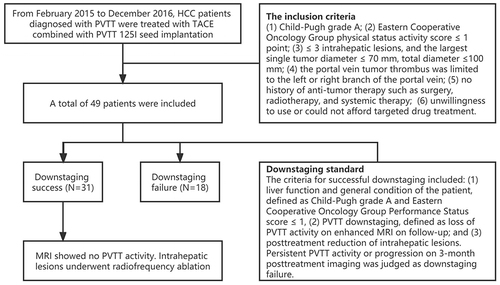Figures & data
Table 1 Comparison of Baseline Characteristics Between the Success and Failed Downstaging Groups
Table 2 Treatment of RFA Within 6 Months in Patients in the Successful Downstaging Group
Table 3 Baseline Information on Different Ablation Outcomes in Patients with the Successful Downstaging Group
Figure 2 Images representing case patients.

Table 4 Treatment Complications


